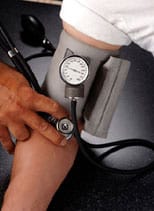A major public health issue, cardiovascular diseases were highlighted at Saint-Roch Hospital. A Health Associations Fair was held to answer all questions. Among these associations, one wished to conduct awareness tests for diabetes, cholesterol, and hypertension.
Three tests in five minutes. That’s what the French association for cardiovascular patients and heart surgery, in partnership with Pfizer laboratories, offered. Fill out a form, a quick finger prick, and it’s done. The nurse takes two drops of blood and places them on two devices called CardioCheck. The results are displayed instantly. Some patients discover they have diabetes, others cholesterol. Still others are reassured: nothing to report from that end.
Then comes the blood pressure check. All these tests were offered for free at booth number 15. The aim: to inform, prevent, and raise awareness about cardiovascular risk factors. And for that, brochures alone are not enough.
Hoping to elicit reactions, the association organized a screening of a film “Journey to the Heart of the Arteries.” Short, clear, and in 3D, it summarizes the development of these diseases on the arterial wall. More focused on explanation, the film gives a significant place to listing the perils but also highlights ways to reduce them.
Indeed, there are certain “modifiable” risk factors over which one can have an influence: excessive “bad cholesterol,” high blood pressure, type II diabetes, smoking, lack of “good cholesterol,” and stress. Thus, maintaining a balanced diet, not smoking, and regularly exercising significantly reduce the likelihood of developing a cardiovascular disease. On the other hand, it’s impossible to act against age and hereditary family history. These are called “non-modifiable” risk factors.
Such elements need to be taken seriously because the consequences can be severe. Excess cholesterol can cause a myocardial infarction or a stroke. Such major drawbacks can be avoided by changing one’s lifestyle. Diabetes has a direct toxic effect on small vessels. The higher the sugar level, the greater the likelihood of damage. If it affects the eyes, it can cause blindness. Contrary to what some might think, it is the leading cause of blindness among those aged 20-60. Therefore, being young and healthy does not exclude one from these diseases.
The primary cause of mortality worldwide, cardiovascular diseases claim 180,000 victims each year in France. However, one should not panic. These diseases are not inevitable. While it is true that some people are more vulnerable than others, a medical and blood assessment can prevent the onset of such danger. Thus, the patient is able to act accordingly.


